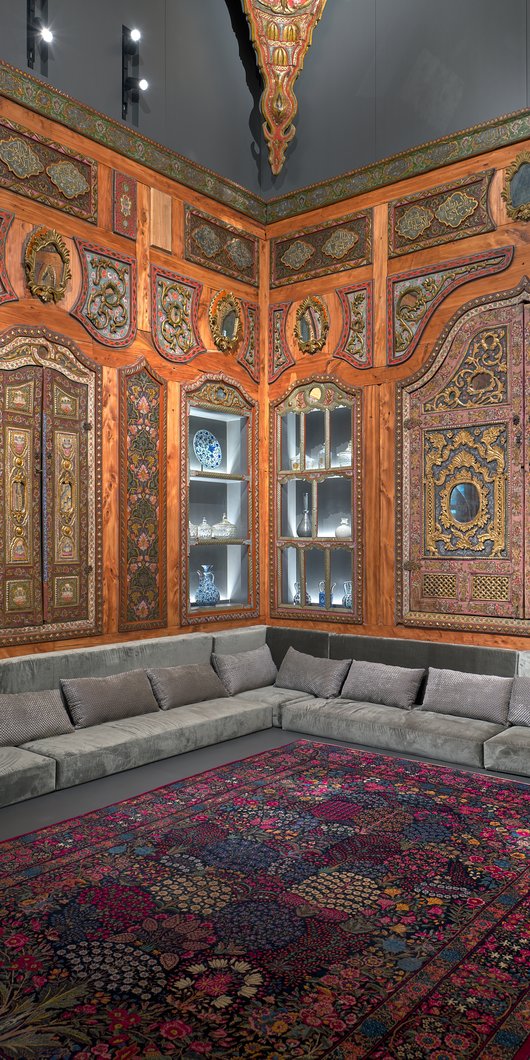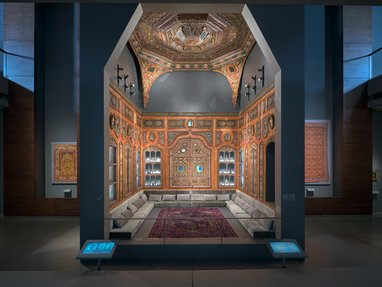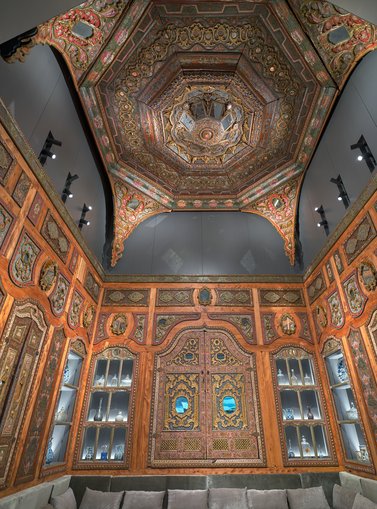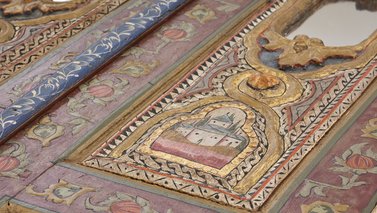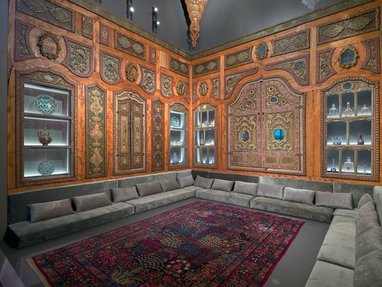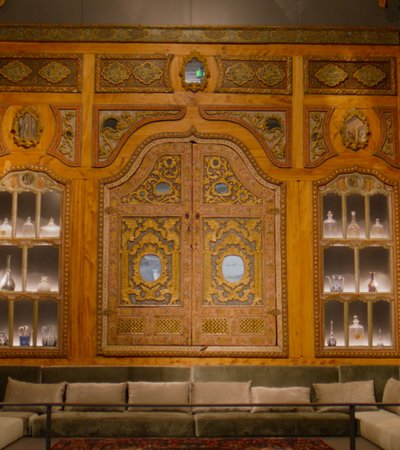For centuries, the city of Damascus was a vibrant urban centre, positioned at the crossroads of major trade routes. The Damascus Room was completed in 1232 AH (1816/1817 CE), a time when the rhythm of exchange in the city was largely determined by the yearly pilgrimage to Mecca. Damascus was one of the main departure points for pilgrims, who would gather in the city to form caravans heading southwards through the desert.
During the 17th and 18th centuries, Damascus saw a boom in mercantile activities, providing merchants with the financial capital to build opulent private residences. These homes were also semipublic spaces, used to facilitate various economic activities: such as the arrangement of marriages, negotiations amongst business partners and the resolution of lawsuits. They served a more communal purpose as well: sites of grieving during funerals, and sites for celebration during banquets, with dance, music and poetry recitals.
The trading of goods and artefacts amongst people from across the region created rich conditions for cultural exchange, resulting in the emergence of new artistic techniques, which influenced the interior decoration of Damascene homes, and enabled the development of an urban interior design aesthetic unique to the city.
Damascus Rooms in museums around the world, from the Metropolitan Museum of Art in New York toShangri La in Honolulu, reflect the artistic richness of their time. The one at MIA, however, is unique in its presentation of the original ceiling. During the research phase, conservation expert Dr. Anke Scharrahs discovered that some of the original panels had been turned over and redecorated – a common practice at the time and a resourceful way to modernise homes. The backs of these panels feature paintings from the 11th century AH/17th century CE.
